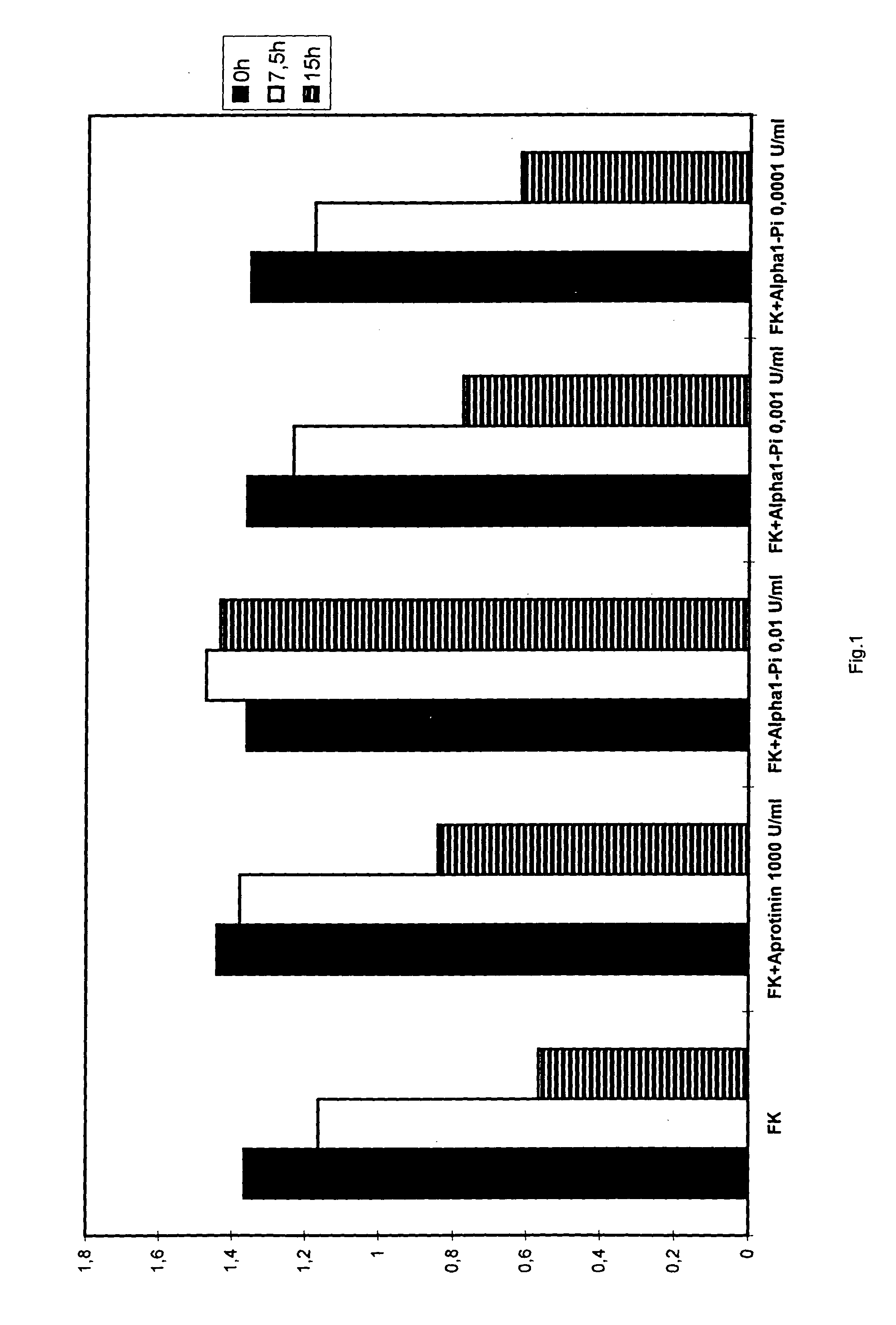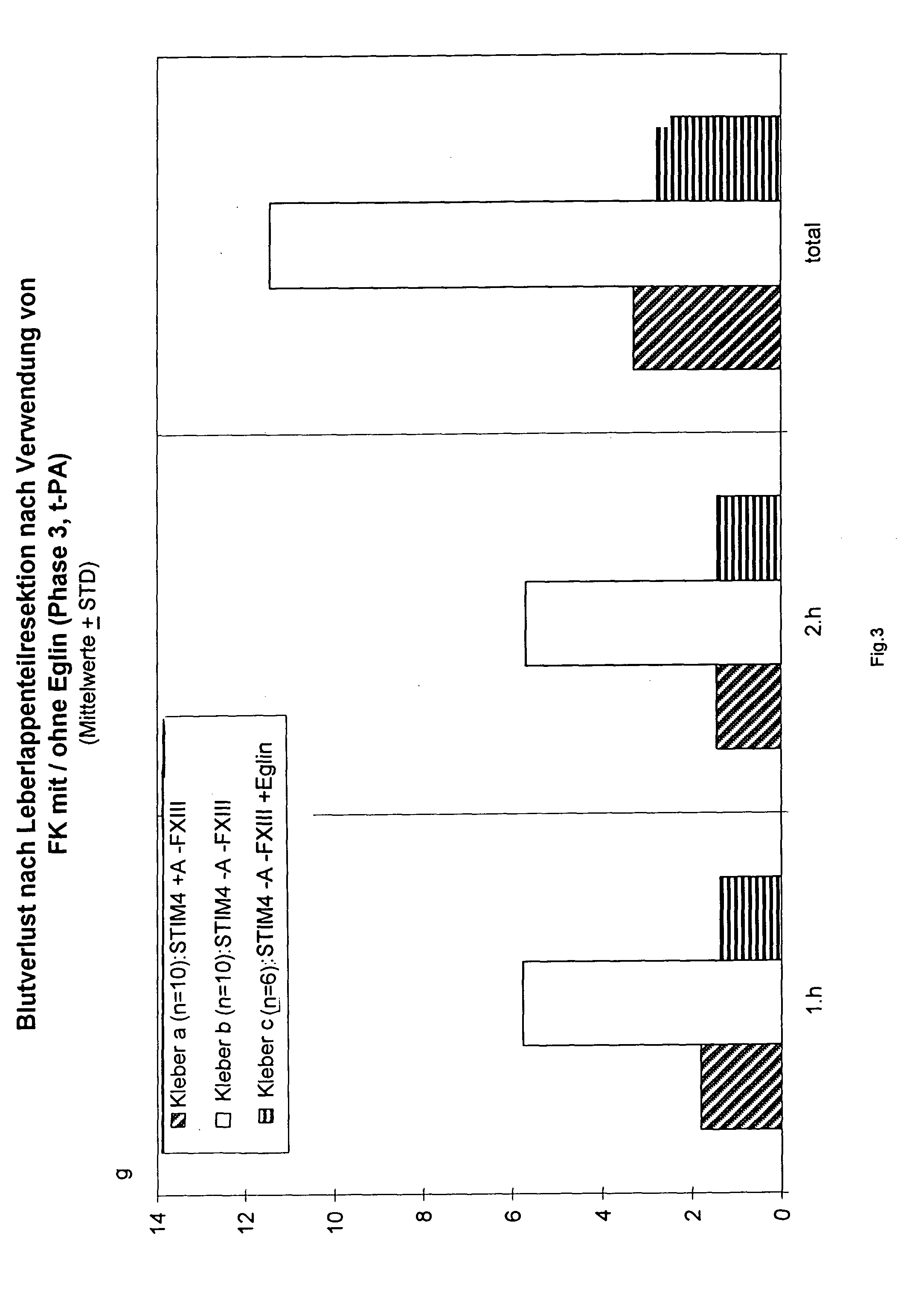Fibrinogen-based tissue adhesive
a tissue adhesive and fibrinogen-based technology, applied in biochemistry apparatus and processes, enzymology, surgery, etc., can solve the problems of fibrinolysis-inhibitory action of aprotinin and lytic processes, and achieve satisfactory and reliable protection, and the quality of adhesion cannot be negatively affected.
- Summary
- Abstract
- Description
- Claims
- Application Information
AI Technical Summary
Benefits of technology
Problems solved by technology
Method used
Image
Examples
examples
[0049]1. In Vitro-Tests for Assaying the Fibrinolysis-Inhibiting Action of the Tissue Adhesive According to the Invention (at Present Considered by Applicant to be the Best Mode of Carrying Out the Invention)
[0050]In this Example, blocking of the lysis of a tissue adhesive clot by means of eglin or α1-antiprotease is shown. In this instance, the tissue adhesive STIM3 (IMMUNO AG, Vienna, AT) (comprising 70 mg of fibrinogen / ml) is dissolved in water and subsequently diluted 1:6 with an 0.9 M NaCl solution.
[0051]This tissue adhesive solution is mixed 1:1 with a thrombin solution that had been dissolved in 40 mM CaCl2 and subsequently had been diluted with a 40 mM CaCl2 / 0.9 M NaCl (1:5) solution to 0.1 U / ml, and pipetted on a micro plate, with 100 μl / well being provided.
[0052]Various concentrations of the inhibitors were added to each 5 μl of tissue adhesive (Eglin 1–100 μg / ml, α1-antiprotease 0.01–1 U / ml).
[0053]For hardening of the adhesive, the microtiter plate was incubated at 37° C....
PUM
| Property | Measurement | Unit |
|---|---|---|
| concentration | aaaaa | aaaaa |
| wave length | aaaaa | aaaaa |
| tissue adhesive | aaaaa | aaaaa |
Abstract
Description
Claims
Application Information
 Login to View More
Login to View More - R&D
- Intellectual Property
- Life Sciences
- Materials
- Tech Scout
- Unparalleled Data Quality
- Higher Quality Content
- 60% Fewer Hallucinations
Browse by: Latest US Patents, China's latest patents, Technical Efficacy Thesaurus, Application Domain, Technology Topic, Popular Technical Reports.
© 2025 PatSnap. All rights reserved.Legal|Privacy policy|Modern Slavery Act Transparency Statement|Sitemap|About US| Contact US: help@patsnap.com



